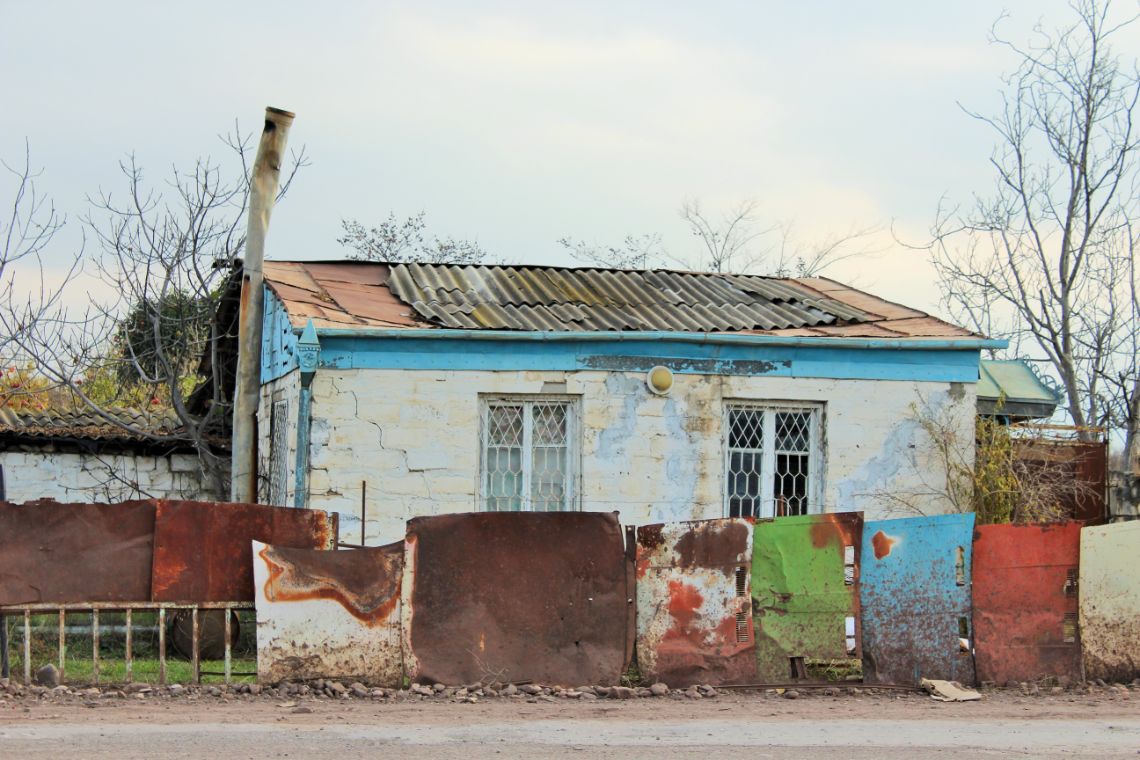
Two faces of Agdam: ruins on one side, "Greater Armenia" on the other – PHOTOS
01 December 2020
The city – each stone and nail in it, was demolished gradually. The territory was treated as a "spare parts depot". Whoever needed something, came and took it, and then came again… The process lasted 28 years. The only building that was not completely destroyed was a mosque. Though they kept animals here for a while. In fact, such "more or less usable" buildings can be found elsewhere. However, there was no permanent residence in the city center and nearby villages after the occupation.
Many things reminiscent of Agdam have been destroyed - administrative buildings, monuments, houses, public catering facilities… The one thing you can do now is to hold a pre-war image of Agdam in your hand, climb the minaret of the mosque and look around to find old streets and neighborhoods.
There were no heavy artillery battles in Agdam. That is to say, all this destruction is the result of "human action." The Alley of Martyrs was completely demolished, graves were dug and bodies were exhumed. In another area, the headstones were broken and overturned in the cemetery. In other cemeteries, marbles were dismantled and transported.
Many compare Agdam to Hiroshima, Japan. International media and experts call it the "Ghost Town". Some associate it with Chernobyl, though all the buildings in Chernobyl are in place. The former residents of the latter recall the pleasant days by looking at the attractions and the mossy cars for kids in Pripyat Park. In Agdam, only the ruins are reminiscent of happy days.
(You can check the photo session on the destruction in Agdam here)
Although they did not live in the "Ghost Town", they were engaged in agriculture here. Therefore, some of the destroyed areas are fenced with barbed wire and car wreck. Fruit trees and vegetable garden can be found in the yards. Pomegranate trees are in the majority. Apparently, this is due to the fact that the tree is resistant to drought.
The area is full of stones and pieces of iron, and among the ruins, in some neighborhoods, red dots catch our attention.… As we approach, we see that they are red peppers.
Out of hundreds of destroyed houses, 2-3 buildings are visible. At first glance, you think they were residing here. As you enter, you see that it is not a house, but a warehouse, used for storage. Obviously, they were needed for those engaged in farming.
Occasionally, pigs in a twosome or threesome are seen in different parts of the city. They were in search of food, swaying among the ruins.
Not far from the center there is a large area with combine harvesters, tractors and Kamaz trucks. Most of the equipment is in disrepair condition. It seems that the cars were working at the time, then the details were dismantled from time to time and taken as spare parts.
There are signs of life in the village of Gizil Kangarli, far from the center of Agdam. Most likely, the families of Armenian servicemen have been settled here. They also have been engaged in agriculture - there are pomegranates, palms, various fruit trees, tomatoes, peppers and vegetables in the backyards. On the streets, there are shops and small counters. It is also possible to determine that some of the buildings are new: they were not planning to leave.
The vast majority of houses built before the occupation in the villages are single-storey. Maintenance work has been carried out in some of those that were not destroyed. But traces of the occupation are still visible everywhere…
The paintings on the outside of the one-story building, reminiscent of a supply point, force us to stop. One of the two murals is a picture of "the ancient Armenian Tsar Tigran". Inside the building, a larger painting is engraved on the wall: "Greater Armenia" map!
This village, this settlement, including the "Greater Armenia" inside, is now under the control of the Azerbaijani army.













